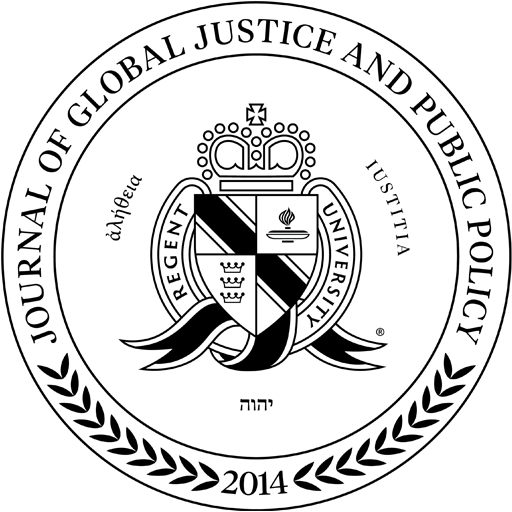Donald E. Soles III† | 3 Regent J. Glob. Just. & Pub. Pol. 149
INTRODUCTION
The European Court of Human Rights (the “Court”) recently decided a French same-sex marriage controversy that was engendered in 2004. 1 In June of 2004, mayor Noël Mamère officiated a marriage between Bertrand Charpentier and Stéphane Chapin.2 Mamère had intended his action to be a test of the compatibility of French law with same-sex marriage, and his ultimate intention was to pursue legal recourse as far as the European Court of Human Rights. 3 Through a refusal to grant an appeal on March 13, 2007, the French Cour de Cassation (the court of last resort for criminal and civil matters) upheld the proposition that marriage is exclusively between a man and a woman,4 and Chapin and Charpentier filed their application for appeal with the Court on September 6, 2007. 5
Perhaps one of the many reasons that same-sex marriage has garnered such eminent controversy in the modern era is due to the way in which proponents of a particular position predominately view counter opinions as being “based on animus.” 6 Without the regard to final causes of this socio-political dissension, the controversy is ripe for legal analysis. The Court accepted the present case to determine the compatibility of France’s ban of same-sex marriage with Articles 8, 12, and 14 of the European Convention of Human Rights (ECHR). 7 Since 1999, and at the time in which the controversy originated, French law recognized the following three types of legal unions: concubinage (similar to the American concept of common-law marriage), “the civil pact of solidarity” (also known as “Pacs;” a civil union other than marriage), and marriage. 8 Same-sex couples could previously avail themselves of concubinage and the civil pact of solidarity, but not legal marriage. 9 Something incredibly odd, however, happened in the time between the Court’s initial acceptance of Chapin in 2007, and the final decision in 2016—France legalized same-sex marriage by statute on May 17, 2013. 10 Therefore, any remedy the Court could have offered in judgment would have been obviated ipso facto, yet the legal enquiry of “discrimination” remained under Articles 8, 12, and 14 of the ECHR. 11
I. THE FACTS & PROCEDURAL HISTORY
In an attempted coup, Noël Mamère conducted a marriage between Bertrand Charpentier and Stéphane Chapin. 12 On May 27, 2004, the local Prosecutor filed an objection to the marriage with the civil registrar for the town of Bègles.13 However, Mamère, who was acting in his capacity as registrar, celebrated the marriage on June 5 despite the objection from the prosecutor.14 The Prosecutor appealed to the High Court of Bordeaux on June 22, and on July 27, this court found that the annulment and subsequent ban of same-sex marriage did not constitute discrimination under Articles 8, 12, and 14 of the ECHR. 15 On April 19, 2005, the Court of Appeals of Bordeaux upheld the lower court’s judgment, reasoning that no discrimination existed under the ECHR because homosexuals were permitted to live as a family and adopt children. 16 Finally, the highest court in France rejected a petition for appeal, deferring to the lower court and specially noting that “marriage is the union [between] a man and a woman.”17
† B.S. 2014, Regent University; J.D. 2017, Regent University School of Law.
1 See Chapin v. France, App. No. 40183/07, Eur. Ct. H.R. (2016),
http://hudoc.echr.coe.int/fre?i=001-163436 (translation on file with J. GLOBAL JUST. & PUB. POL’ Y); Press Release, Eur. Ct. H.R., Prohibition in France of Marriage Between Same-Sex Couples Prior to the Law of 17 May 2013 Was Not Contrary to the Convention, ECHR 199 (2016), http://hudoc.echr.coe.int/eng-press?i=003-5407086-6765196 [hereinafter Press Release].
2 Daniel Borrillo, Who Is Breaking with Tradition? The Legal Recognition of Same-Sex Partnership in France and the Question of Modernity, 17 YALE J.L. & F EMINISM 89, 93 (2005).
3 Id.
4 See Emmanuelle Bribosia, Isabelle Rorive & Laura Van den Eynde, Same-Sex Marriage: Building an Argument Before the European Court of Human Rights in Light of the US Experience, 32 BERKELEY J. INT’L L. 1, 6 (2014).
5 Chapin, App. No. 40183/07, Eur. Ct. H.R. ¶ 1; Press Release, supra note 1, at 2.
6 See LYNN D. WARDLE, MARK P. STRASSER & LYNNE MARIE KOHM , FAMILY L AW FROM MULTIPLE P ERSPECTIVES 114–15 (2014).
7 Chapin, App. No. 40183/07, Eur. Ct. H.R. ¶¶ 3–14; Press Release, supra note 1, at 2.
8 See Benoît de Boysson et al., France: Review of Family Law in 2010, in THE INTERNATIONAL SURVEY OF F AMILY L AW 187, 190 (Bill Atkin & Fareda Banda eds., 2011).
9 Id.
10 Angélique Devaux, The New French Marriage in an International and Comparative Law Perspective, 23 T UL. J. INT’ L & COMP . L. 73, 76 (2015).
11 Chapin, App. No. 40183/07, Eur. Ct. H.R. ¶¶ 3, 7–8; see also Press Release, supra note 1, at 2.
12 See Bribosia, Rorive, & Van den Eynde, supra note 4, at 6 (noting that the act of celebrating the marriage was civil disobedience).
13 Chapin, App. No. 40183/07, Eur. Ct. H.R. ¶ 12.
14 Id. ¶ 13.
15 Id. ¶¶ 14–15.
16 Id. ¶ 16; see also Convention for the Protection of Human Rights and
Fundamental Freedoms art. 8, Nov. 4, 1950, 213 U.N.T.S 221 [hereinafter ECHR]
(guaranteeing the right to private life and family).
17 Chapin, App. No. 40183/07, Eur. Ct. H.R. ¶ 20.
